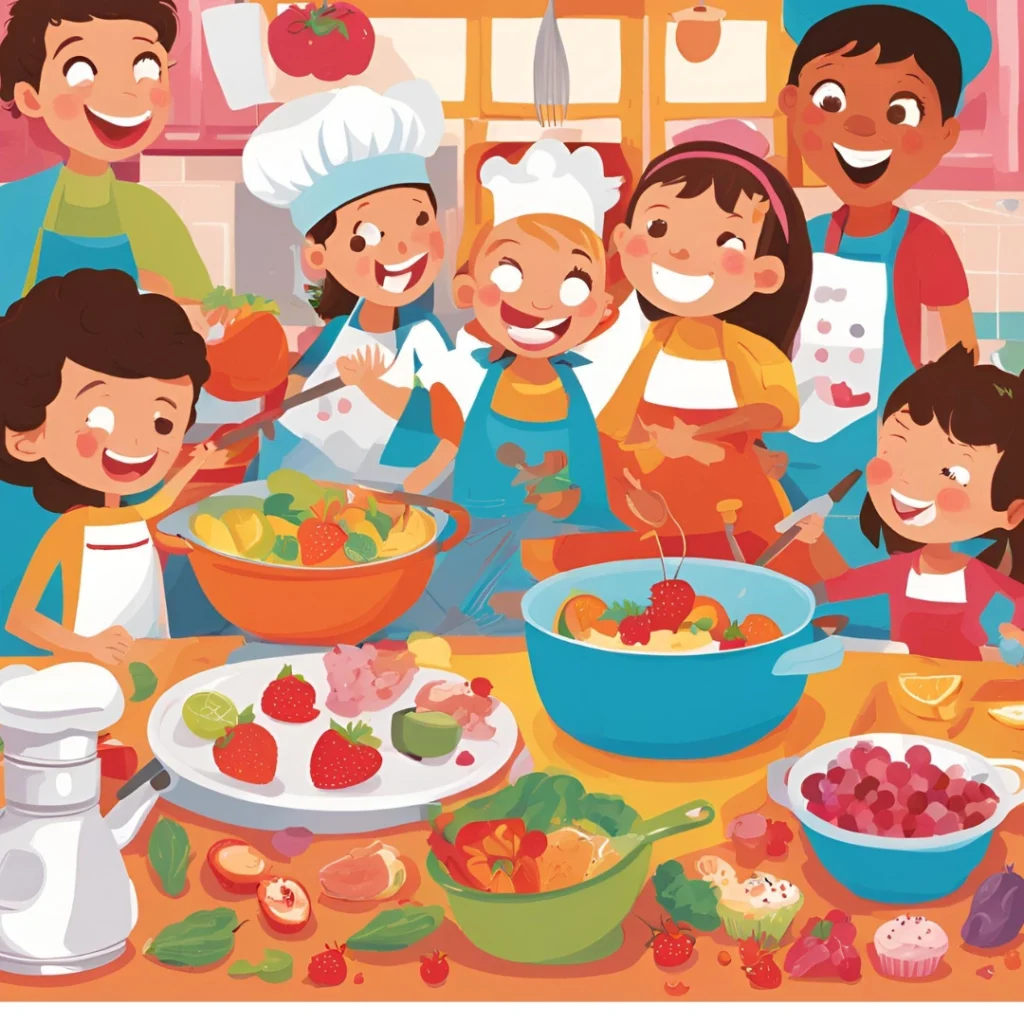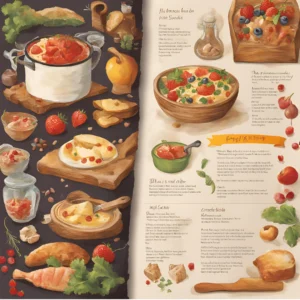Table of contents
Engaging Introduction
Have you ever wondered why so many kids turn their noses up at the thought of cooking? Is it because they think it’s boring, or maybe they haven’t been introduced to the right recipes yet? What if there was a way to make cooking fun and educational for your little ones? Let’s explore some amazing children’s recipe book ideas that will inspire creativity in the kitchen while teaching valuable life skills.
Overview
Cooking with kids doesn’t have to be chaotic—it can actually be one of the most rewarding experiences for both parents and children. These children’s recipe books are designed to spark joy and curiosity in young chefs, offering simple yet exciting dishes that even beginners can tackle. Each recipe is quick to prepare, taking no more than 30 minutes, ensuring busy families can enjoy quality time together without stress. Plus, these recipes cater to all levels of difficulty, from easy-peasy snacks to slightly more challenging creations perfect for older kids.
Essential Ingredients
When selecting ingredients for a children’s recipe book, simplicity and versatility are key. Here’s what you’ll need:
- Fresh Fruits & Vegetables: They add color, flavor, and essential nutrients. Swap out seasonal produce to keep things interesting.
- Whole Grains: Think whole wheat pasta, brown rice, or oats—these provide energy and fiber.
- Protein Sources: Chicken, beans, tofu, or eggs offer filling options that support growth.
- Dairy Alternatives: Milk, cheese, yogurt, or plant-based substitutes ensure creamy textures and calcium intake.
- Herbs & Spices: A sprinkle of cinnamon, basil, or nutmeg transforms ordinary meals into extraordinary ones.
Feel free to adapt these staples based on dietary preferences or allergies. For instance, gluten-free flours work great for baking, and vegan alternatives can replace animal products seamlessly.
Step-by-Step Instructions
Let’s dive into creating a delightful dish using our first idea: Rainbow Fruit Kebabs.
Step 1: Prep Your Workspace
Lay out all necessary tools like skewers, cutting boards, and bowls within reach. Wash fruits thoroughly before slicing them into bite-sized chunks.
Step 2: Slice the Fruits
Cut strawberries, grapes, melons, bananas, and oranges into uniform pieces. Encourage kids to participate by handing them safe knives or letting them tear softer fruits apart.
Step 3: Assemble the Kebabs
Thread alternating colors onto wooden skewers until each stick resembles a rainbow. This step encourages creativity and fine motor skill development.
Step 4: Serve & Enjoy
Arrange kebabs neatly on plates or platters for presentation. Pair with yogurt dip for added nutrition and taste.
Tip: To prevent browning, toss apples or pears in lemon juice after cutting.
Assembly
Once assembled, take pride in displaying your colorful creation. Arrange items attractively on serving trays or individual plates. Remember, how food looks plays a big role in its appeal—especially for picky eaters! Don’t forget to involve kids in setting the table too; this fosters responsibility and teamwork.
Storage and Make-Ahead Tips
Leftovers from certain recipes, such as muffins or wraps, can easily store in airtight containers in the fridge for up to three days. Reheat gently in the microwave or toaster oven when ready to serve again. Some dishes, like salads or soups, may benefit from being prepped ahead but assembled just before eating to maintain freshness.
For longer storage, consider freezing portions of baked goods or sauces. Label clearly with dates and thaw overnight in the refrigerator before reheating.
Recipe Variations
Here are six additional fun children’s recipe book ideas to try:
- Mini Pizza Bagels: Top toasted bagel halves with tomato sauce, cheese, and veggies for customizable mini pizzas.
- Smoothie Bowls: Blend frozen berries, spinach, and almond milk into thick smoothies topped with granola and fresh fruit.
- Homemade Popsicles: Mix fruit juices, yogurt, and pureed fruits then freeze in molds for refreshing summer treats.
- Taco Bar Night: Set up stations with tortillas, proteins, toppings, and condiments allowing everyone to build their own tacos.
- No-Bake Energy Bites: Combine oats, peanut butter, honey, chocolate chips, and chia seeds rolled into bite-sized balls.
- Edible Cookie Dough: Whip up a safe-to-eat version using chickpeas, vanilla extract, and sweetener for guilt-free snacking.
Each variation promotes hands-on learning and experimentation, making mealtime memorable.
Conclusion
Creating a children’s recipe book filled with engaging and nutritious recipes opens doors to endless possibilities. By involving kids in the process, you’re not only fostering independence but also nurturing lifelong healthy habits. So gather those aprons, roll up sleeves, and start exploring the magical world of culinary arts together!
FAQs

Q: How do I encourage my child to cook?
A: Start small with age-appropriate tasks like stirring batter or washing vegetables. Gradually introduce more complex techniques as confidence grows.
Q: Are these recipes healthy?
A: Absolutely! All suggested recipes emphasize balanced nutrition incorporating whole foods rich in vitamins, minerals, and antioxidants.
Q: Can I customize these recipes further?
A: Of course! Feel free to tweak ingredients according to taste or dietary needs. The goal is to make cooking enjoyable and personalized for every family member.
With these tips and tricks under your belt, get ready to embark on an adventurous journey through the wonderful realm of kid-friendly cooking!

